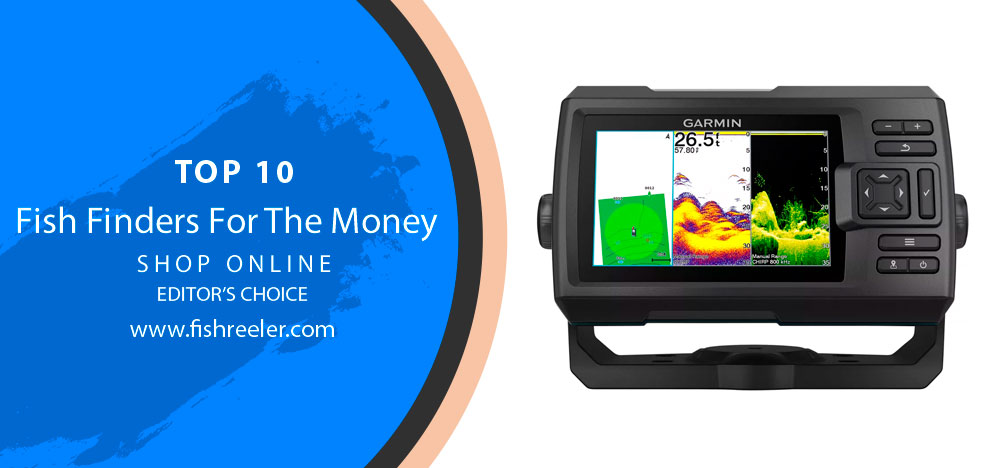
Navigating the Best Deals: Top Economical Fish Finders
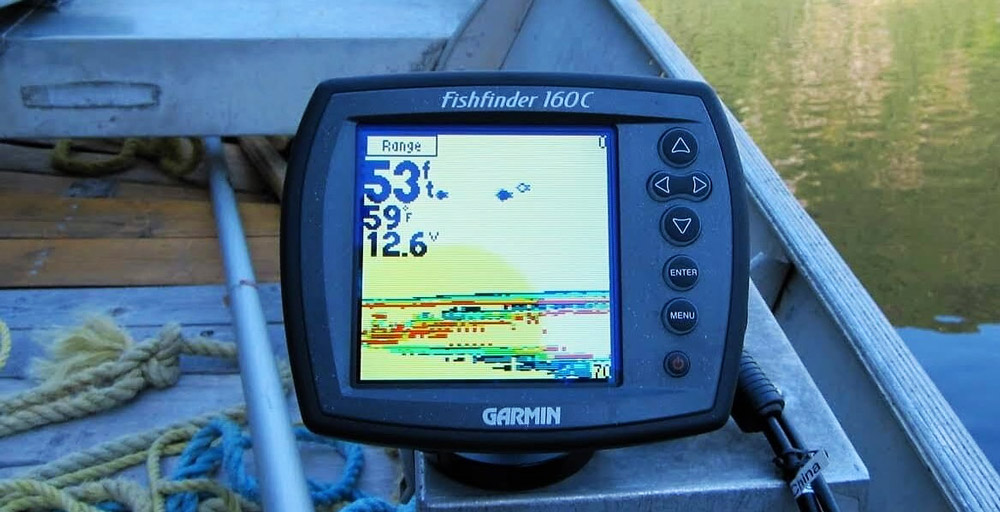
Casting Off: My Personal Journey With Fish Finders
It was a misty morning on Lake Erie. The sun was just beginning to peek through the clouds, casting a soft glow on the calm waters. Like any other fishing enthusiast, I was out on the lake, hoping to reel in a great catch. The day was slow. Two hours passed, and all I had to show for my patience was a lone smallmouth bass. But then, I turned to my secret weapon, my trusted fish finder. Within minutes, the screen lit up, showing a school of walleye hiding in the depths. Following the directions on the screen, I cast my line, and soon enough, I was reeling in one walleye after another. By the time the sun was high in the sky, I had a cooler full of fish, all thanks to my fish finder.
A Tale from the Waves: Unveiling the Magic of Technology
If you’re new to the world of fishing or have yet to invest in a fish finder, you might be wondering what magic this device holds. A fish finder is a sonar device that sends sound waves into the water and interprets the echoes it receives to give you a detailed view of what’s beneath your boat. It can detect schools of fish, submerged structures, and changes in the depth and topography of the lake bed, giving you a significant advantage and transforming your fishing experience.
The Role of a Fish Finder: A Game-Changer in Fishing
However, I am aware that the price tag on some of these devices can be quite intimidating. In today’s world of advanced technology, it’s easy to assume that the most expensive device will give you the best performance. But as a professional angler and fishing guide with years of experience under my belt, I can assure you that this isn’t always the case. There are numerous affordable fish finders in the market that deliver excellent performance and reliable results.
The mission of the Guide: Your Path to Affordable Fish Finding
The purpose of this article is to guide you to the best economical fish finders available in 2023. This guide will not only help you save money but also ensure you’re investing in a device that will truly enhance your fishing experience. So, let’s dive in and navigate the waters to find the best deals on fish finders.
Navigating the Best Deals: Top 10 Economical Fish Finders
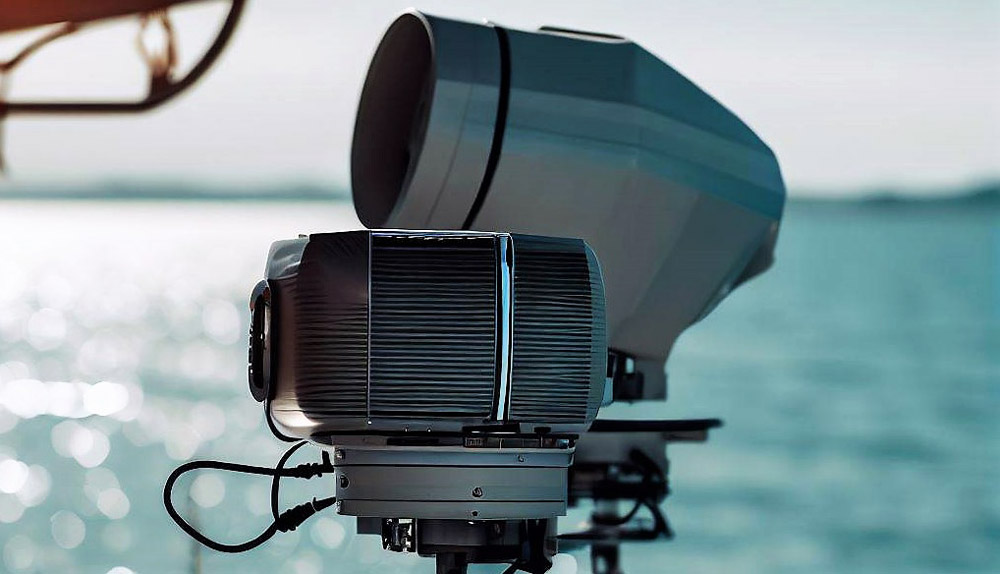
There are many fish finders on the market, and it can be tough to determine which one is the best for your needs. If you are looking for a quality fish finder but don’t want to break the bank, check out our list of the best fish finders for the money. Our top-rated models are sure to help you find your next big catch. In this article, we will take a look at some of the best fish finders for the money. We will also provide a buyer’s guide to help you choose the right model for your needs. So, if you are in the market for a new fish finder, read on!
1# Garmin ECHOMAP UHD 93sv Touch-Screen Fish Finder/Chartplotter
Looking for a top-of-the-line fish finder that won’t break the bank? Look no further than the Garmin ECHOMAP UHD 93sv. This powerhouse comes packed with features like a bright 9″ touch screen, preloaded LakeVü g3 maps, and support for Panoptix all-seeing sonar. Plus, with built-in WiFi, you can easily share your data with other ECHOMAP users. Whether you’re a seasoned pro or just getting started in the world of fishing, the ECHOMAP UHD 93sv is a perfect choice.
2# Garmin ECHOMAP UHD 75cv Fish Finder/Chartplotter Combo
Check out the Garmin ECHOMAP UHD 75cv! This unit comes packed with features that any serious angler will love, including a Bright, sunlight-readable 7″ touchscreen with a keyed assist, compatible with Ultra High-Definition ClearVü and Ultra High-Definition SideVü scanning sonars, and preloaded Canada LakeVü g3 inland maps with integrated Navionics data. Plus, it supports Panoptix all-seeing sonar, including Panoptix LiveScope sonar – perfect for getting a live view of what’s going on beneath the water’s surface.
3# Garmin STRIKER Vivid 5cv Fish Finder with GT20-TM Transducer
This amazing device uses both Garmin CHIRP traditional sonar and CHIRP ClearVü scanning sonar to give you the most accurate picture of what’s going on beneath the surface of the water. You’ll be able to easily see fish and structure, thanks to the vivid color palettes and greater contrast. Plus, with high-sensitivity GPS, you can mark waypoints, create routes, and view your boat’s speed. And with built-in Quickdraw Contours mapping, you can easily create your own custom fishing maps. So don’t miss another fish – get your Garmin STRIKER Vivid 5cv Fish Finder!
4# Humminbird HELIX 9 CHIRP GPS G4N Fish Finder/Chartplotter
The Humminbird HELIX 9 CHIRP GPS G4N Fish Finder/Chartplotter is a top-of-the-line fish finder that any serious angler would love to have. Its 9-inch, sunlight-viewable display is perfect for use on bright days, and its soft-key controls and user-friendly menu system make it a breeze to operate. Plus, it comes with a proprietary, Low-Q CHIRP transducer for enhanced performance. And if that’s not enough, it also supports Dual Spectrum CHIRP with Wide Mode and Narrow Mode. Plus, it has an enhanced built-in base map and the most complete offering of premium chart options available.
5# Simrad NSS evo3S Fish Finder/Chartplotter with C-MAP US Enhanced Charts
The Simrad NSS evo3S Fish Finder/Chartplotter is the perfect choice for anglers who demand the very best in fish-finding technology. With a built-in GPS receiver and wireless connectivity, the NSS evo3S provides all the information you need to find and catch fish. The integrated echosounder with 1kW CHIRP provides outstanding performance, while the SolarMAX IPS display ensures clear and precise views, even in direct sunlight. Whether you’re mounting it flush or using the convenient bracket, the NSS evo3S is sure to provide many years of reliable service.
6# Lowrance HDS LIVE 16 Fishfinder/Chartplotter with Active Imaging 3-in-1
The LOWRANCE HDS LIVE 16 is a high-definition fishfinder/Chartplotter that gives you the clearest possible view of fish and underwater structures. It features Active Imaging 3-in-1 technology, which combines CHIRP, Down Scan, and Side Scan to give you a detailed, 360-degree view of your surroundings. The 16″ display is bright and easy to read, even in direct sunlight. And with Wi-Fi, Bluetooth, and Ethernet connectivity, you can easily keep your LOWRANCE HDS LIVE 16 connected to all your other devices.
7# Lowrance HDS LIVE 9 Fish Finder/Chartplotter
The Lowrance HDS LIVE 9 Fish Finder/Chartplotter is a high-definition, 9″ multi-touch screen fish finder/Chartplotter that has the widest range of viewing angles and is viewable even through polarized sunglasses. It features ActiveTarget Live Sonar, Smartphone notifications, C-MAP Genesis Live onscreen mapping, StructureScan 3D, High-performance dual-core processor, FishReveal Smart Target View, Preloaded high-detail C-MAP US Enhanced charts with 1′ contours on 4,000-plus lakes and C-MAP Easy Routing, Navionics Autorouting capability.
8# Humminbird HELIX 10 CHIRP GPS G4N Fish Finder/Chartplotter
Looking for a top-of-the-line fish finder/chart plotter? Check out the Humminbird HELIX 10 CHIRP MEGA SI GPS G4N. This unit features a 10″, sunlight-viewable, high-resolution display, making it easy to see what’s going on beneath the surface. The soft-key controls and user-friendly menu system make it easy to navigate, even when you’re out on the water. Plus, with Dual Spectrum CHIRP support with Wide Mode and Narrow Mode, you’ll be able to find fish like never before.
9# MarCum MX-7GPS Lithium-Powered Sonar/GPS Combination Unit
If you’re serious about fishing, you need the MarCum MX-7GPS Lithium-Powered Sonar/GPS Combination Unit. This unit provides pinpoint GPS and industry-renowned sonar, so you can easily find and catch fish. With the widest and narrowest sonar viewing angles on the market, you won’t miss a thing. The 20° ultra-wide-angle sonar cone lets you see fish further to the sides, while the 8° narrow-beam transducer targets only the fish directly below. You can also fine-tune the interference rejection with 12 settings. Plus, there’s an internal GPS receiver and microSD card slot. The True-Time 7″ LCD with MarCum MX-7GPS Lithium-Powered Sonar/GPS Combination Unit!
10# HawkEye FishTrax 1C Color Handheld Fishfinder
Check out the HawkEye FishTrax 1C. This compact fishfinder uses dual-beam intelligent sonar to provide accurate readings of both fish and bottom contours. You can adjust the sensitivity to 100 levels, and choose from multiple depth ranges. The bottom tracking feature ensures you always know where the fish are, even in deep water. Plus, the VirtuView HD display provides crystal clear visuals in vivid colors. Best of all, the unit comes with a transducer, so you’re ready to start fishing right out of the box!
What to Look for in a Fish Finder
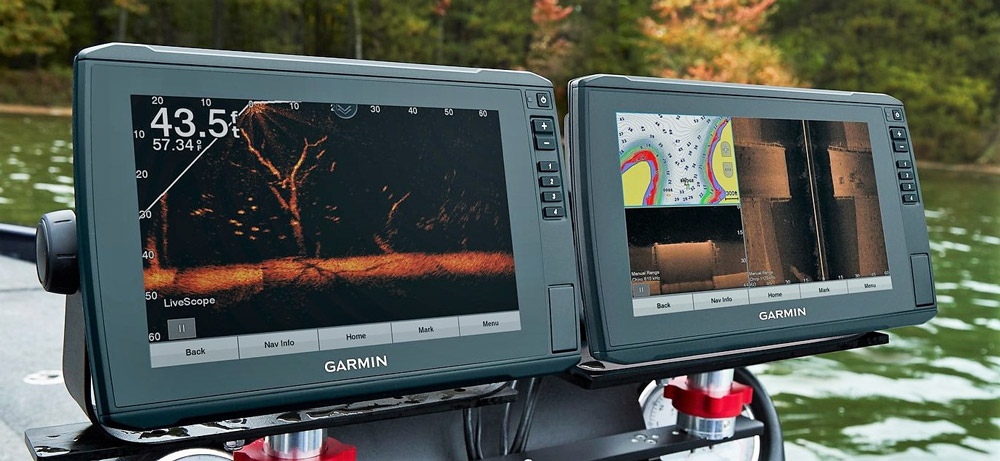
Essential Features: Navigating the Tech of Fish Finders
Navigating the world of fish finders can be overwhelming, especially with the myriad of features and specifications that each model presents. However, understanding these features is crucial to making an informed decision, ensuring you get the best value for your money. Here are some key features to consider when purchasing a fish finder:
✅Screen Size and Type: The screen is your window into the underwater world. Larger screens provide a more detailed and clearer image. However, they can be more expensive and consume more power. In terms of type, you’ll typically find LCD and TFT screens. TFT screens offer better color and contrast, but they usually come with a higher price tag. Depending on your fishing needs and budget, a smaller LCD screen might be sufficient.
✅Frequency: Frequency refers to the number of sonar waves the device emits. Higher frequencies (200 kHz or more) provide more detail and are ideal for fishing in shallow water. Lower frequencies (50-100 kHz) penetrate deeper and are better for deep-sea fishing. Some devices offer dual or multiple frequencies, giving you the flexibility to switch based on your fishing location.
✅Power: The power of a fish finder, measured in Watts (W), determines how quickly the device can interpret and display the data. Higher power means faster readings and deeper range, making it ideal for deep-sea fishing. Lower power devices are more affordable and suitable for shallow-water fishing.
✅Transducer: The transducer is the component that sends and receives sonar waves. Its cone angle determines the width of the area it can scan. Wider cones cover a larger area but offer less detail, while narrower cones provide more detail but cover a smaller area. Some models offer adjustable or multiple cone angles for versatility.
✅GPS: A built-in GPS can be a valuable feature, especially for offshore fishing. It allows you to mark productive fishing spots, track your boat’s speed, and navigate waters safely. However, fish finders with GPS tend to be more expensive.
✅Additional Features: Some fish finders offer advanced features such as CHIRP (Compressed High-Intensity Radar Pulse) technology for better image clarity, Wi-Fi connectivity for integrating with your smartphone, or compatibility with fishing apps. While these features can enhance your fishing experience, they can also increase the price.
Cost vs. Performance: The Balancing Act in Choosing Fish Finders
In conclusion, the price and performance of a fish finder are significantly impacted by its features. While higher-end models with advanced features can deliver superior performance, they might be overkill if you’re a casual angler or fish in shallow waters. By understanding what each feature offers and aligning it with your fishing needs, you can find an affordable fish finder that delivers excellent performance.
Why Price Isn’t Everything
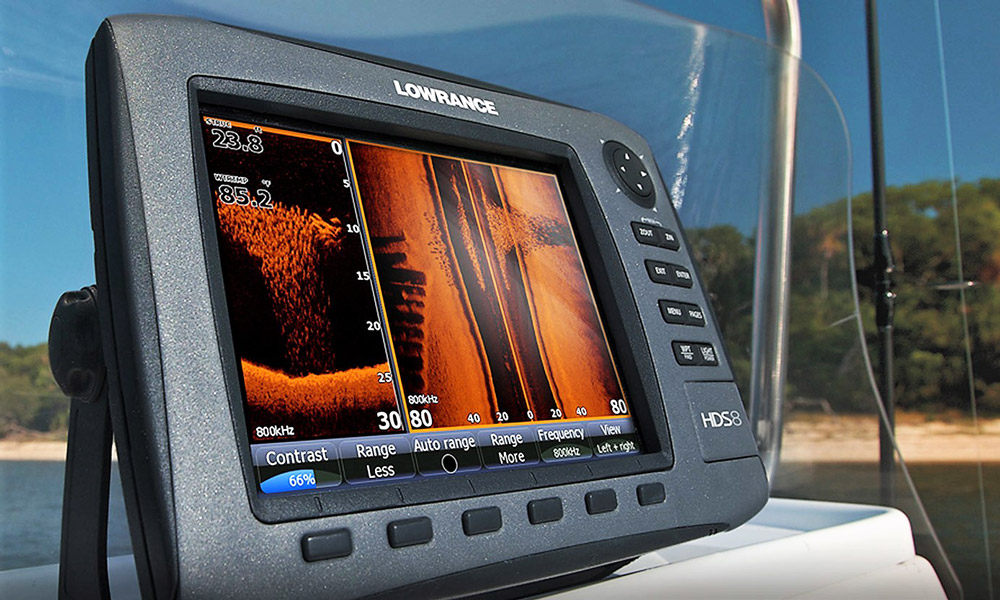
Beyond the Price Tag: Deciphering the Real Value of a Fish Finder
In the world of fishing equipment, as with many other areas of life, a higher price doesn’t always mean better performance. While it’s true that more expensive fish finders often come with a host of advanced features, these bells and whistles might not necessarily translate into a better fishing experience for every angler.
The most expensive models often boast features like high-resolution multi-touch screens, dual-channel CHIRP sonar, and advanced marine networking capabilities. However, these features are more tailored toward professional anglers and commercial fishing vessels. For an average weekend angler, many of these features might go unused, making the higher price point unjustifiable.
Take, for instance, the use of high-frequency sonar. High-frequency sonar provides fantastic detail and resolution, perfect for discerning different types of structures and identifying individual fish species in shallow water. However, in deeper water, these high frequencies become less effective as their range is limited. A more affordable fish finder with a lower frequency transducer can actually outperform in such scenarios, providing better depth penetration and a broader scanning area.
Another example lies in the GPS and mapping features. While top-tier fish finders come with high-end GPS modules and detailed preloaded maps, these features may be unnecessary for someone who only fishes in local, familiar lakes or rivers. A budget fish finder with basic GPS capabilities for marking hotspots can serve just as well.
Lastly, the complexity of high-end models can be a downside for many. With a steep learning curve, these devices might seem daunting to a beginner or even intermediate angler. On the other hand, less expensive models often offer a more user-friendly interface and straightforward functionality, allowing you to focus more on fishing and less on fiddling with the settings.
Underdogs in the Market: Affordable Fish Finders That Outshine the Expensive Ones
In essence, the key is to assess your specific fishing needs and skills before investing in a fish finder. An affordable model that fits your requirements well can often prove to be a better choice, providing you with value for money and an enhanced fishing experience.
Top 5 Affordable Fish Finders: Detailed Reviews
🐠Garmin Striker 4
🟨Description and Features: The Garmin Striker 4 is a compact fish finder with a 3.5-inch color display. It features a dual-frequency CHIRP sonar for clear fish arches and excellent target separation. Additionally, it has a built-in, high-sensitivity GPS for waypoint marking and navigation.
🌐Best For: This model is great for beginners and casual anglers, and it performs well in small to medium-sized bodies of water.
💰Price Range and Where to Buy: The Garmin Striker 4 is typically priced around $100-$150 and can be found on major online retailers like Amazon and at outdoor specialty stores.
🎒Humminbird PIRANHAMAX 4
🟨Description and Features: The PIRANHAMAX 4 features a 4.3-inch display with a dual-beam sonar. It also offers Fish ID+ features and depth alarms.
🌐Best For: This is an excellent choice for kayakers and small boat owners who primarily fish in freshwater lakes and rivers.
💰Price Range and Where to Buy: The Humminbird PIRANHAMAX 4 is typically priced around $100-$150 and can be purchased online or at sporting goods retailers.
🐙Deeper PRO+ Smart Sonar
🟨Description and Features: This unique, castable fish finder connects to your smartphone using Wi-Fi. It offers dual-beam sonar, built-in GPS for mapping, and is suitable for all types of fishing.
🌐Best For: This fish finder is ideal for shore anglers, ice fishers, and those who prefer a portable and flexible solution.
💰Price Range and Where to Buy: The Deeper PRO+ Smart Sonar is typically priced around $200-$250 and can be found on the Deeper website, Amazon, and other online retailers.
💯Lowrance HOOK Reveal 5x
🟨Description and Features: The HOOK Reveal 5x offers a 5-inch SolarMAX display, SplitShot transducer with High CHIRP, and DownScan Imaging. It also features FishReveal technology to make fish easier to spot.
🌐Best For: The HOOK Reveal 5x is perfect for intermediate to advanced anglers fishing in various water types.
💰Price Range and Where to Buy: The Lowrance HOOK Reveal 5x is typically priced around $200-$300 and can be purchased from the Lowrance website, Amazon, or other fishing equipment retailers.
🐞Raymarine Dragonfly 4PRO
🟨Description and Features: The Dragonfly 4PRO features a 4.3″ all-weather, high-definition LED backlit display, dual-channel CHIRP sonar, and Wi-Fi connectivity to stream sonar data to your smartphone.
🌐Best For: This is an excellent choice for serious hobbyists and semi-professional anglers who require advanced features but still want to keep costs relatively low.
💰Price Range and Where to Buy: The Raymarine Dragonfly 4PRO is typically priced around $250-$300 and can be found on the Raymarine website, Amazon, and at outdoor specialty stores.
Each of these fish finders offers excellent performance for their price range, catering to various fishing styles and user experience levels. Whether you’re a beginner or a seasoned angler, you’ll surely find a model that fits your needs and your budget among these top picks.
Comparisons and Benchmarks
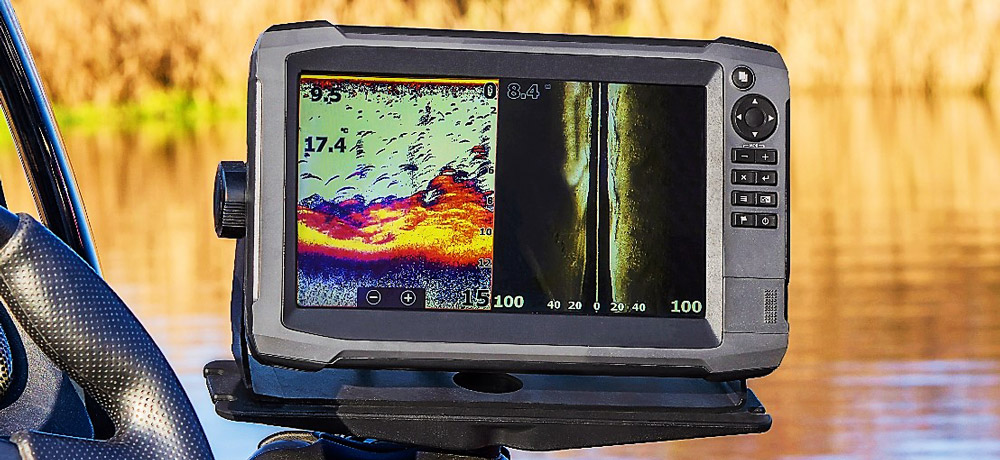
Side by Side: Comparing the Top Affordable Fish Finders
Comparing these models side by side can provide a clearer perspective on which fish finder might be the best fit for your specific needs. Below is a comparison chart showcasing the key features, pros, and cons of each model:
| Model | Key Features | Pros | Cons |
|---|---|---|---|
| Garmin Striker 4 | Dual-frequency CHIRP sonar, GPS | Excellent value, User-friendly | Small screen, No detailed maps |
| Humminbird PIRANHAMAX 4 | 4.3″ display, Dual-beam sonar, Fish ID+ | Large display, Easy to use | Lacks GPS |
| Deeper PRO+ Smart Sonar | Castable, Dual-beam sonar, GPS | Portable, Detailed data | Requires a smartphone, Unstable Wi-Fi |
| Lowrance HOOK Reveal 5x | 5″ SolarMAX display, High CHIRP, DownScan Imaging | High-quality sonar, Clear display | Lacks GPS |
| Raymarine Dragonfly 4PRO | 4.3″ HD LED display, Dual-channel CHIRP, Wi-Fi | Advanced features, Durable | Small screen, Wi-Fi drains battery |
Field Test Insights: How These Models Perform in Real-Life Fishing Scenarios
Now, let’s discuss how these models perform in real-life scenarios:
Garmin Striker 4: The Striker 4 has consistently proven itself to be a reliable companion for casual anglers and beginners. Its intuitive interface and reliable sonar make it a go-to for many who enjoy weekend fishing trips on local lakes or rivers.
Humminbird PIRANHAMAX 4: The PIRANHAMAX 4 shines in freshwater environments. Anglers have reported excellent target separation and depth readings, even in murkier waters. While the lack of GPS is a downside for some, those who stick to familiar waters find the performance-to-price ratio to be very satisfactory.
Deeper PRO+ Smart Sonar: The Deeper PRO+ truly stands out in its versatility. Whether it’s being cast from the shore, dropped through an ice hole, or attached to a kayak, users have reported excellent detail and accuracy. However, some have noted the need to carry an external power bank due to the Wi-Fi draining their smartphone’s battery more rapidly.
Lowrance HOOK Reveal 5x: The HOOK Reveal 5x has impressed many with its FishReveal technology, which makes fish easier to spot against structures and the bottom. Although some users wish it had GPS capabilities, its sonar performance in both shallow and deeper waters receives high praise.
Raymarine Dragonfly 4PRO: The Dragonfly 4PRO is a favorite among more serious hobbyists. Users appreciate the advanced dual-channel CHIRP sonar and the ability to stream data to their phones. However, some have reported that the Wi-Fi feature, while useful, can significantly reduce battery life if used extensively.
All of these fish finders have proven to be reliable and effective in their respective niches, offering excellent value for the price. As always, the “best” choice will ultimately depend on your specific needs, preferences, and budget.
Tips for Using Fish Finders Effectively
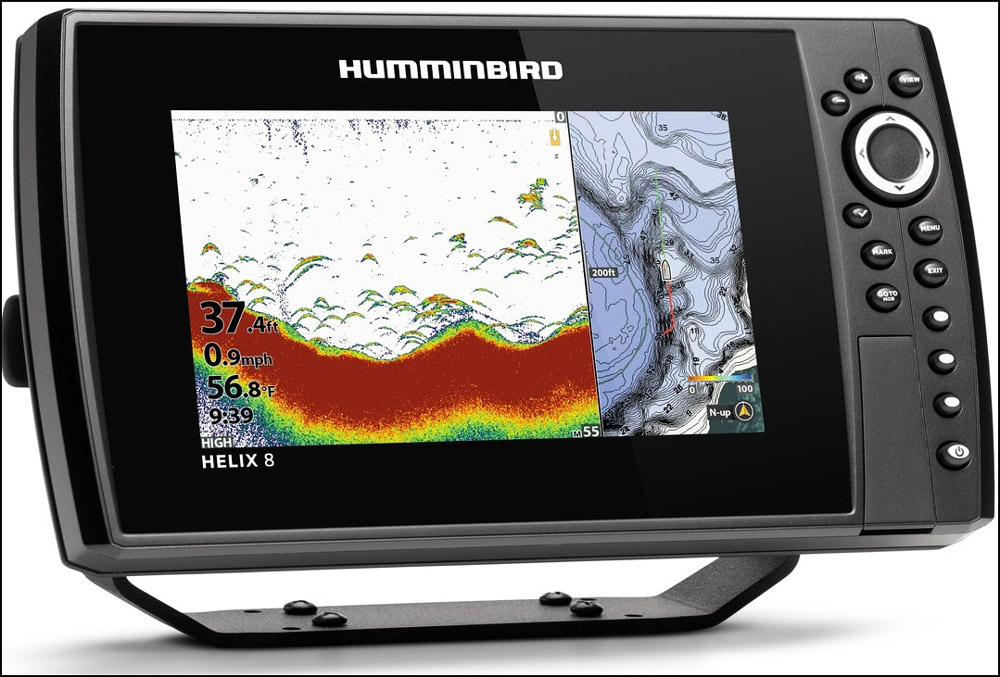
Getting the Most Out of Your Fish Finder: Tips and Tricks from a Pro
No matter which fish finder you choose, understanding how to use it effectively is crucial. Here are some professional tips and tricks to help you get the most out of your device:
- ▶Understand Your Sonar: Sonar technology is the backbone of your fish finder. Learn how to read and interpret the information displayed by your device. Familiarize yourself with terms like arches (for fish), lines (for the bottom), and clutter (for debris or vegetation).
- ▶Use the Right Frequency: If you’re fishing in shallow waters, higher frequencies (like 200 kHz) can provide more detail. For deep-water fishing, lower frequencies (like 50 kHz) will give you a broader, but less detailed view. Many fish finders offer dual or multi-frequency options, so choose the one that suits your current fishing conditions.
- ▶Use Fish ID Feature Wisely: While the Fish ID feature, which displays fish icons instead of arches, can be helpful for beginners, it’s not always accurate. Learning to read the arches and distinguish between different sizes and types of fish can enhance your fishing experience.
- ▶Utilize the Zoom Feature: Don’t just rely on the wide view. Use the zoom feature to look at a specific area more closely. This can help identify fish near the bottom or distinguish between baitfish and game fish.
- ▶Mark Your Spots: If your fish finder has GPS, make sure to use it. Mark the spots where you’ve had success so you can return to them in the future. Also, marking underwater structures, drop-offs, or vegetation can help you find productive spots faster on your next trip.
- ▶Regular Updates and Maintenance: Keep your device updated with the latest software updates. Also, regular maintenance, like cleaning the transducer, can prolong its life and ensure accurate readings.
Implementing these tips can enhance your fishing efficiency, leading to better results and an overall more enjoyable experience. But how does this save money in the long run?
Economizing Your Fish Finder Usage: Tips That Save You Money in the Long Run
Well, by learning to use your fish finder effectively, you can maximize its potential and delay the need for an upgrade. You’ll be less likely to be swayed by marketing gimmicks for expensive features you don’t need. Moreover, by taking good care of your device and performing regular updates and maintenance, you can prolong its lifespan, avoiding the cost of premature replacement.
Remember, a fish finder is a tool, and like any tool, its effectiveness largely depends on the skill of the user. So, invest some time in mastering these tips and you’ll surely see the difference in your fishing exploits.
Future of Fish Finders: The Next Wave of Fishing Innovation
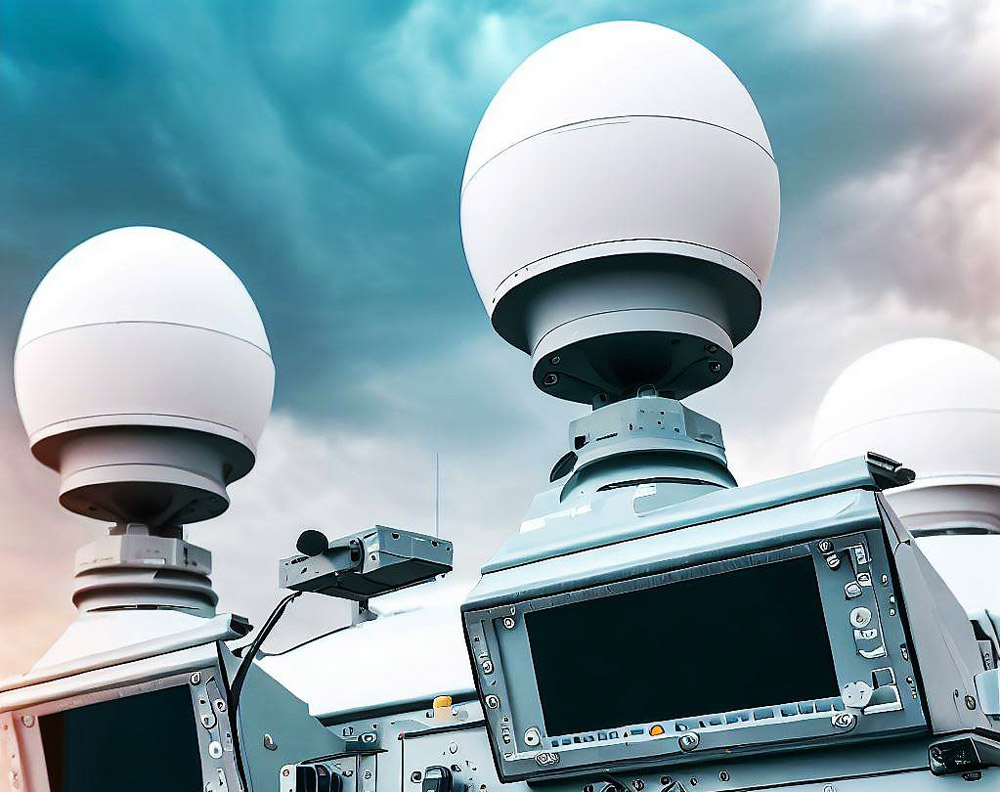
The Horizon of Fish Finding: Upcoming Trends in Technology
As we delve into the future of fish finders, we see an exciting confluence of technology and the great outdoors. The rapid advancement in technology has brought about changes that could potentially revolutionize how we fish. Here are some of the latest trends in fish finder technology:
- ➽Integration with Smart Devices: We’ve already seen the beginning of this trend with devices like the Deeper PRO+ Smart Sonar. In the future, expect more fish finders to integrate with smartphones and other smart devices. These advancements could lead to the development of apps that offer real-time data analysis, shareable maps, and even social networking among anglers.
- ➽Artificial Intelligence and Machine Learning: AI and machine learning could make fish finders even more user-friendly and accurate. These technologies can help in better interpreting sonar data, distinguishing between species of fish, and even predicting fish behavior based on various factors like weather, time, and location.
- ➽Advanced Imaging: Technologies like side imaging and 360-degree imaging offer anglers a more comprehensive view of the underwater world. As these technologies continue to evolve, we can expect even clearer, more detailed images that can help identify fish, structure, and bottom composition with unprecedented accuracy.
- ➽Augmented Reality (AR): While still in its early stages in the fishing world, AR could be the next big thing. Imagine a heads-up display that overlays valuable data onto your real-world view, like where to cast your line, or how deep the fish are.
Weighing the Benefits: Are the New Features Worth the Extra Cost?
Like most technology, the value is subjective and depends on the individual user. Casual anglers who fish for relaxation may find that basic models meet their needs just fine. However, for competitive anglers or professionals, these advanced features could provide an edge that makes the investment worthwhile.
Remember, the primary purpose of a fish finder is to help you locate fish. If an advanced feature helps achieve that goal more effectively, it might be worth considering. However, a more expensive model won’t necessarily make you a better angler. Learning to interpret the data, understanding fish behavior, and gaining experience on the water is just as important, if not more so.
As we look forward to the future of fish finders, it’s an exciting time to be an angler. With these technological advancements, we’re not just seeing beneath the surface of the water – we’re gaining a deeper understanding of the aquatic world.
FAQ: The Finest Fish Finders for Your Money
Conclusion: Budget-Friendly Buys
When it comes to finding the best fish finders for your money, there are a lot of things you need to take into account. The most important factor is probably what type of fishing you plan on doing. If you’re mostly going after smaller fish in freshwater lakes and ponds, almost any basic fish finder should do the job. However, if you’re targeting larger gamefish in saltwater environments, you’ll need something more advanced with features like GPS tracking and sonar mapping. In this buyer’s guide, we’ve rounded up some of the top-rated fish finders for the money across a variety of categories. We hope this helps make your decision easier when shopping for a new unit.
Additionally, if you still have questions and are still looking for more clarity on how to choose fish finders for kayaks, fish finders for under $1000, portable solutions, ice fishing fish finders, and flashers, read this article: “Fish Finder Reviews: Our Guide to the Best Sonar Technology“. In my opinion, the article explains how to choose a product very clearly. I hope that these tips will help you in making your decision.
Charting Your Course to Successful Fishing
In this guide, we’ve navigated the waters of budget-friendly fish finders, examining the features and benefits of some of the best models available. From the excellent value and user-friendly Garmin Striker 4 to the versatile Deeper PRO+ Smart Sonar that brings fish finding right to your smartphone, each model offers unique strengths that make it a standout in its price range.
Reeling it In: Summing Up the Best Value Fish Finders
We also covered why the most expensive fish finder isn’t always the best choice, with models like the Humminbird PIRANHAMAX 4 and Raymarine Dragonfly 4PRO proving that top-tier performance doesn’t always come with a top-tier price tag.
Each of these models offers excellent performance for their price range, catering to various fishing styles and user experience levels. Whether you’re a beginner dipping your toes into the world of fish finders or a seasoned angler looking to upgrade your toolset without breaking the bank, there’s a fish finder on this list that’s a perfect match for your needs.
Personalizing Your Purchase: Choosing the Right Fish Finder for Your Needs
Remember, the best fish finder for your money is not necessarily the one with the most features or the highest price tag. It’s the one that best fits your fishing style, your level of expertise, and, of course, your budget.
So, take a moment to consider what you need from a fish finder. Reflect on the features that are most important to you, whether that’s a large display, GPS capabilities, advanced sonar technologies, or smartphone integration. Then, weigh those needs against your budget to find the fish finder that offers the best value for you.
In the end, the right fish finder can open up a whole new dimension to your fishing adventures, offering a glimpse into the underwater world that was once out of sight. Whichever model you choose, there are too tight lines and a bountiful catch.
Dive In: We Want to Hear from You!
Share Your Catch: Inviting Readers’ Experiences and Queries on Affordable Fish Finders
The sea of fishing is vast, and every angler has a unique tale to tell. We are eager to hear about your own experiences with affordable fish finders. Have you had a particularly good (or bad) experience with one of the models we’ve discussed? Do you have another budget-friendly fish finder that you swear by? Your insights could help other readers make their decision, and enrich our community’s understanding of these valuable tools.
Keeping the Conversation Afloat: Your Questions, Our Prompt Responses
Furthermore, if there are any questions, concerns, or points of confusion, please don’t hesitate to ask. Whether you’re wondering about a specific feature, need help comparing two models, or want advice on how to get the most out of your new fish finder, we’re here to help. We promise to respond promptly and do our best to provide clear, helpful answers.
Remember, fishing is not just about the catch, but also about the shared experiences, wisdom, and camaraderie that come with it. By sharing your thoughts and questions, you’re not only contributing to your own fishing journey but also to those of your fellow anglers.
So, let’s cast our lines into the waters of discussion. Share your experiences, ask your questions, and let’s dive deeper into the world of affordable fish finders together!

I live in Tenerife (Canary Islands) for the last 10+ years and share my daily fishing experiences on my website. Many years of personal experience as a fisherman and the vast experience of my friends allow me to write professionally on any fishing topics (from choosing a flashlight and equipment to deep-sea fishing).
All of my advice is based on practical real-world experience and will be useful to both novice anglers and professionals. Read more about the author.
Affiliate Disclosure: FishReeler.org sometimes gets paid for listings, through sponsors or affiliate programs like Amazon, Ebay, Cabelas, Bass Pro Shop, Shimano, Daiwa, Rapala, Renn, Okuma, KastKing, etс. Clicking a link helps keep FishReeler.org free, at no extra cost to you!
About the author: Each article is verified by the fishing expert Sergio Smirnoff. The articles are written by professional and amateur fishermen with 20+ years of fishing experience.
Note: The views and opinions expressed in this article are those of the authors and do not necessarily reflect the official policy or position of any agency. The articles are for informational purposes only, share your opinions in the comments and join the fishing discussions, let's share our fishing experiences together!

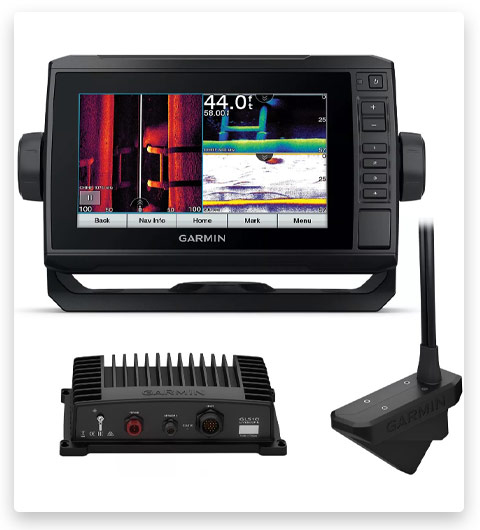
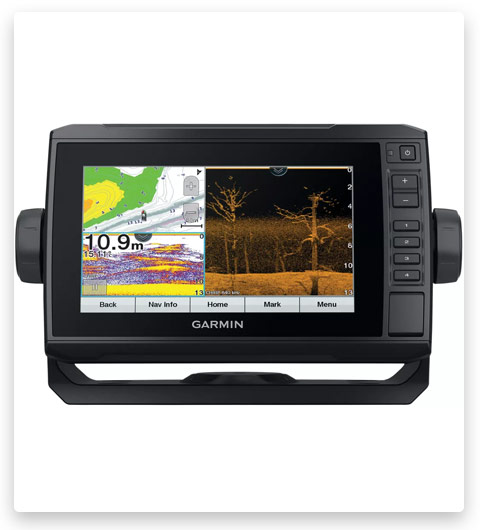
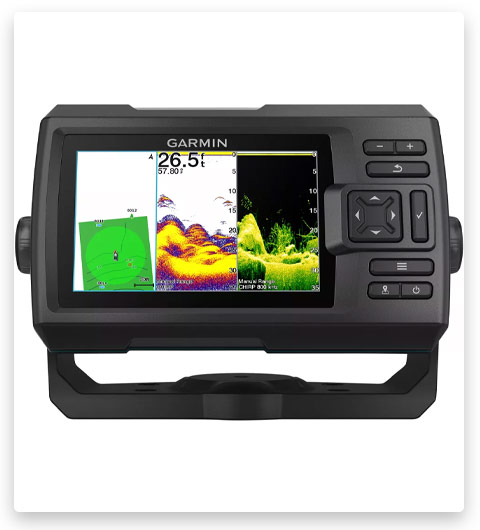
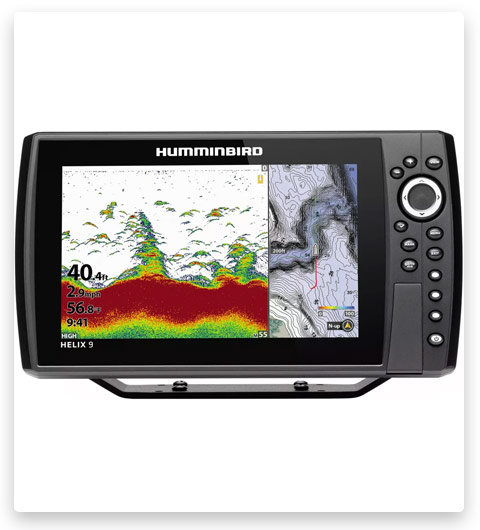
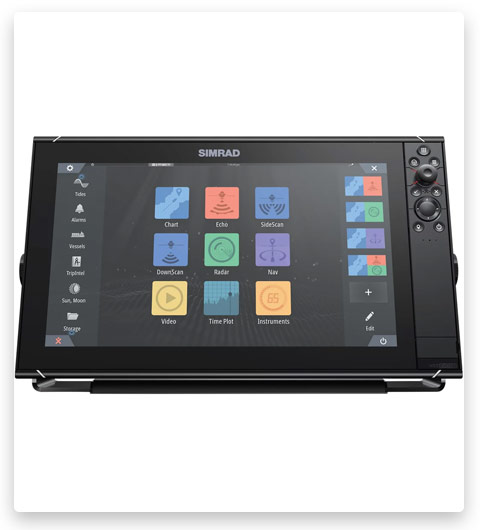
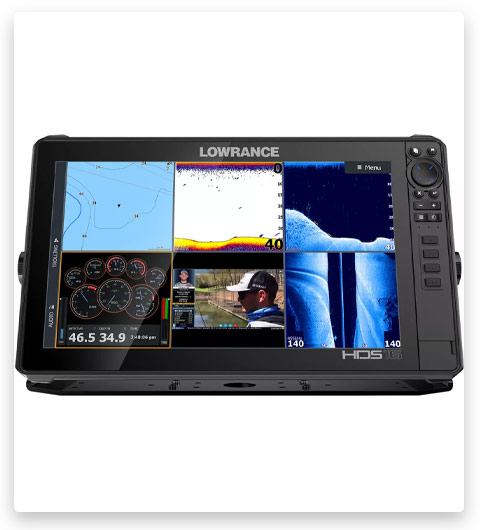
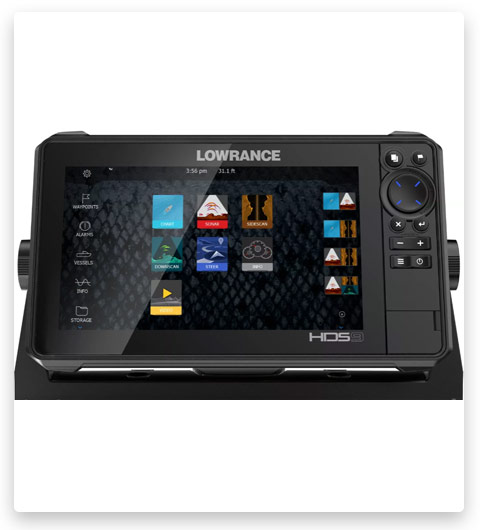
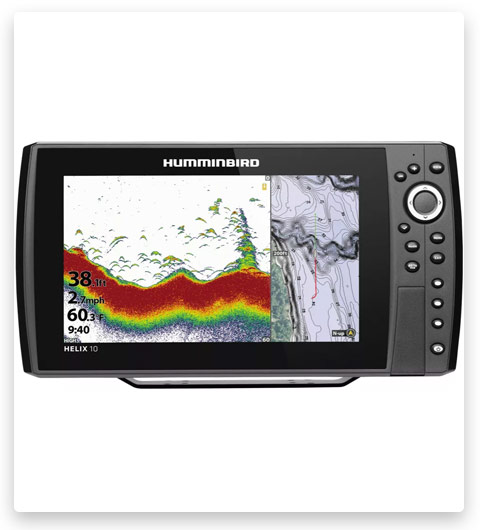

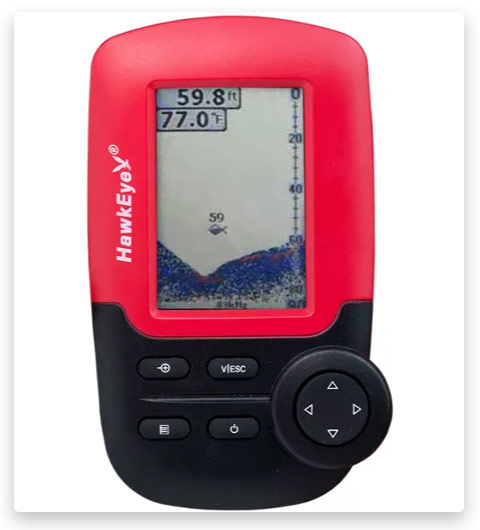
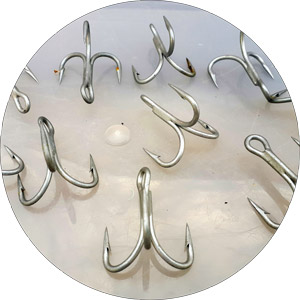
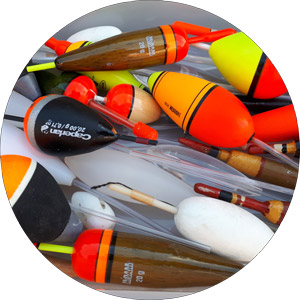
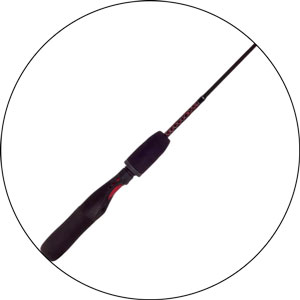
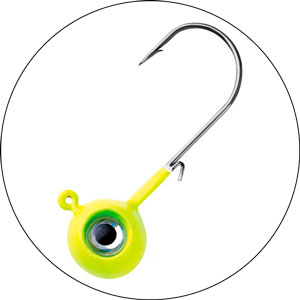
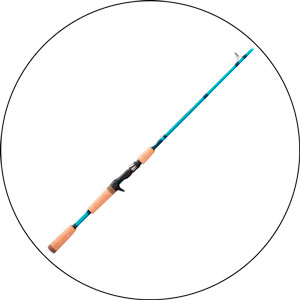
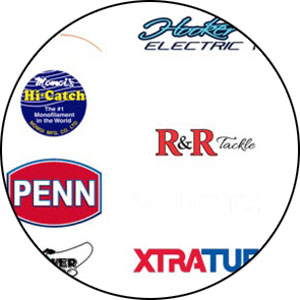
I’m glad you highlighted the importance of understanding your fishing needs before choosing a fish finder. I fish in shallow rivers and don’t need half the features on a high-end model. The Garmin Striker 4 has been perfect for me. Value for money indeed!
Great guide! It’s refreshing to see an article that emphasizes value over price. Too many people think they need to shell out big bucks for a decent fish finder. I’m excited about the future of the fish finders you mentioned. Can’t wait to see how the technology evolves!
As a saltwater angler, I was thrilled to see the Raymarine Dragonfly 4PRO on the list. It’s served me well on many deep-sea expeditions. The CHIRP sonar and GPS combo make it a steal at that price point.
Excellent article! I’ve been using the Humminbird PIRANHAMAX 4 for a couple of years now, and it’s worth every penny. It may be on the cheaper side, but it has never let me down. It’s a solid option for any angler on a budget.
As someone new to fishing, this article is a godsend! I’ve been on the fence about investing in a fish finder, thinking they were all really expensive. Thanks for shedding light on some affordable options. I’m leaning towards the Deeper PRO+ Smart Sonar since I love the idea of using my smartphone as a display.
As a fellow angler who’s spent countless hours on Lake Erie, I can’t emphasize enough how much a good fish finder can change the game. I’ve had my share of slow mornings on the lake, and my Garmin Striker 4 has always come to the rescue. Great to see it listed here as a top pick!